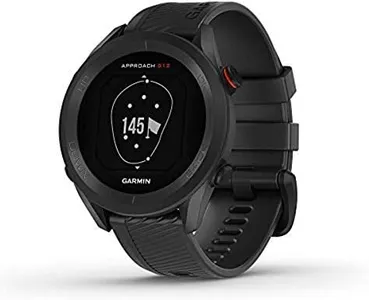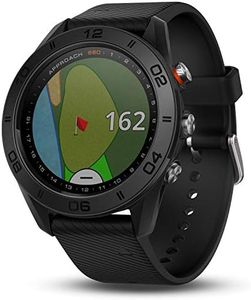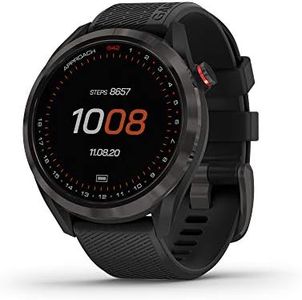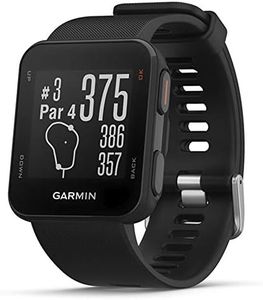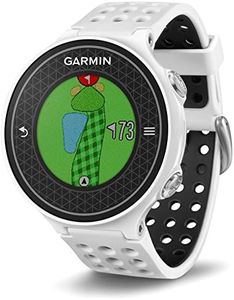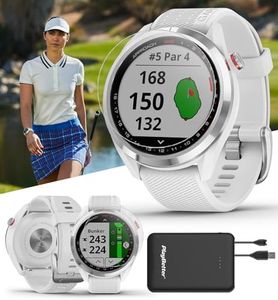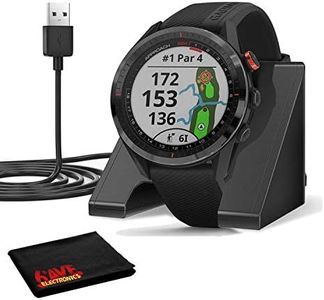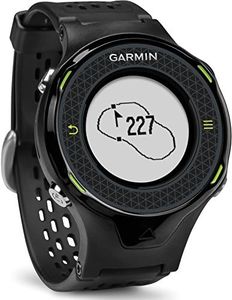We Use CookiesWe use cookies to enhance the security, performance,
functionality and for analytical and promotional activities. By continuing to browse this site you
are agreeing to our privacy policy
10 Best Garmin Golf Watches
From leading brands and best sellers available on the web.Buying Guide for the Best Garmin Golf Watches
Choosing the right golf watch can make a big difference in your game, helping you track your performance, navigate courses, and improve your skills. When shopping for a golf watch, it's important to think about how you play, what features will actually help you on the course, and how comfortable and easy the watch is to use. Understanding the key specifications will help you find a watch that fits your needs and enhances your golfing experience.GPS AccuracyGPS accuracy refers to how precisely the watch can determine your location on the golf course. This is important because accurate yardages to the green, hazards, and other course features can help you make better decisions during play. Some watches offer basic GPS, while others use more advanced systems for higher accuracy. If you play on a variety of courses or want the most precise information, look for watches with enhanced GPS capabilities. For casual play, standard GPS may be sufficient.
Course Maps and CoverageCourse maps and coverage indicate how many golf courses are preloaded or available for download on the watch. This matters because you want your home course and any others you visit to be supported. Some watches come with thousands of courses worldwide, while others may have more limited options. If you travel or play at different courses often, choose a watch with extensive course coverage. If you mostly play at one or two local courses, basic coverage may be enough.
Battery LifeBattery life tells you how long the watch can operate before needing a recharge, especially when using GPS features. This is important because a watch that runs out of power mid-round can be frustrating. Battery life can range from a single round to several days, depending on the model and settings. If you play long rounds or multiple days in a row without charging, look for a watch with longer battery life. For occasional or short rounds, standard battery life should suffice.
Shot Tracking and StatisticsShot tracking and statistics refer to the watch’s ability to record your shots, distances, and other performance data. This helps you analyze your game and identify areas for improvement. Some watches offer automatic shot detection, while others require manual input. If you’re serious about improving your game and enjoy reviewing your stats, look for advanced tracking features. If you just want basic yardages, you may not need detailed shot tracking.
Display and ReadabilityDisplay and readability describe how easy it is to see information on the watch, even in bright sunlight. This is important because you need to quickly glance at your watch during play. Displays can vary in size, brightness, and whether they are color or black-and-white. If you have trouble reading small screens or play in bright conditions, look for a watch with a larger, high-contrast display. If you prefer a lighter, simpler watch, a basic display may be fine.
Comfort and DurabilityComfort and durability refer to how the watch feels on your wrist and how well it stands up to outdoor use. This matters because you’ll be wearing it for several hours at a time, often in different weather conditions. Some watches are lightweight and slim, while others are more rugged and water-resistant. If you value comfort or have sensitive skin, look for a lightweight, soft-band watch. If you play in tough conditions or want a watch that lasts, prioritize durability.
Smart FeaturesSmart features include things like notifications, fitness tracking, and compatibility with your smartphone. These can add convenience and make the watch useful off the course as well. If you want a watch that doubles as a fitness tracker or keeps you connected, look for models with these extra features. If you only care about golf, you may not need them.
